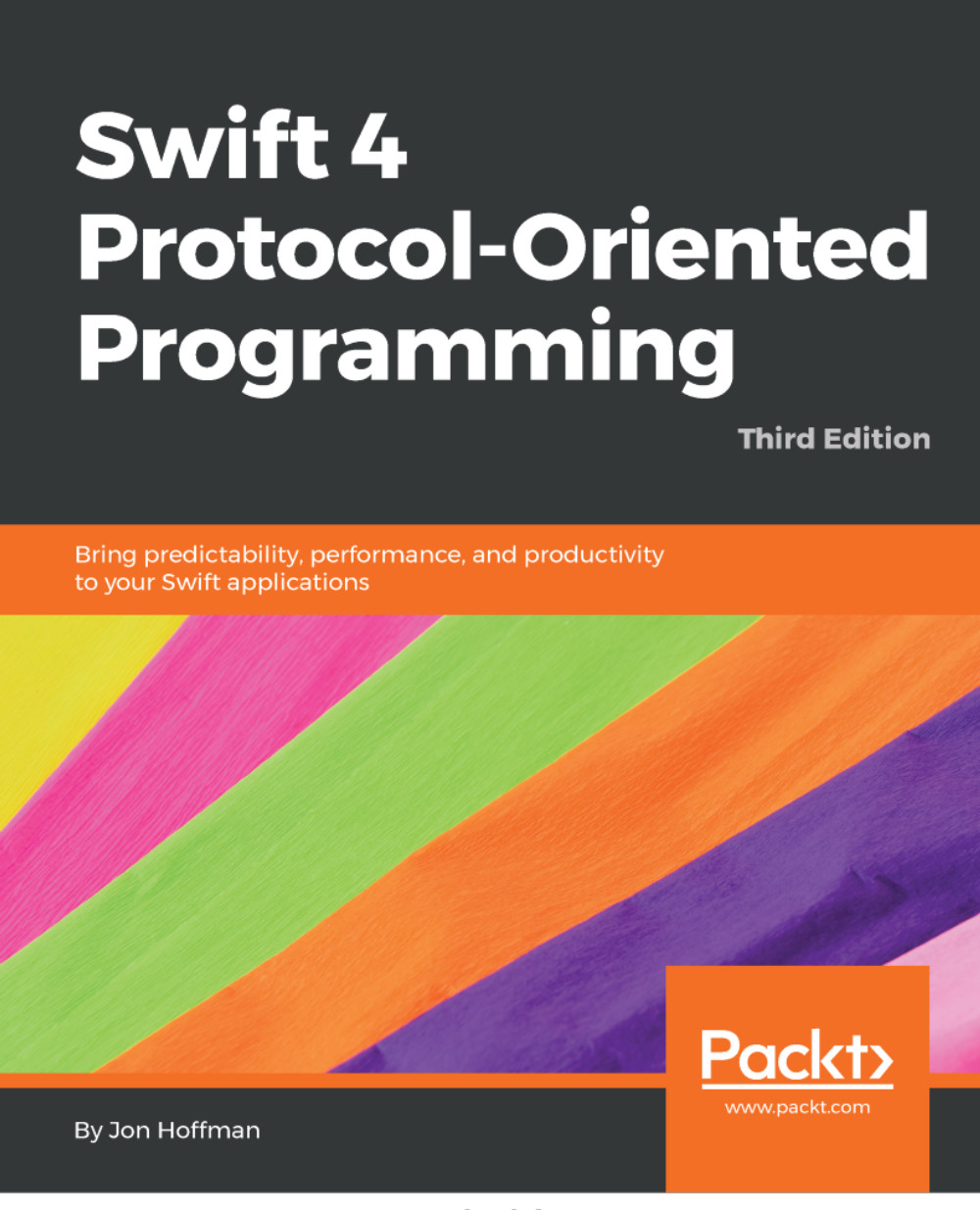-
Book Overview & Buying

-
Table Of Contents

Swift 4 Protocol-Oriented Programming - Third Edition
By :

Swift 4 Protocol-Oriented Programming
By:
Overview of this book
Swift has become the number one language used in iOS and macOS development. The Swift standard library is developed using protocol-oriented programming techniques, generics, and first-class value semantics; therefore, every Swift developer should understand these powerful concepts and how to take advantage of them in their application design.
This book will help you understand the differences between object-oriented programming and protocol-oriented programming. It will demonstrate how to work with protocol-oriented programming using real-world use cases. You will gain a solid knowledge of the various types that can be used in Swift and the differences between value and reference types. You will be taught how protocol-oriented programming techniques can be used to develop very flexible and easy-to-maintain code.
By the end of the book, you will have a thorough understanding of protocol-oriented programming and how to utilize it to build powerful and practical applications.
Table of Contents (9 chapters)
Preface
 Free Chapter
Free Chapter
Starting with the Protocol
Our Type Choices
Extensions
Generics
Object-Oriented Programming
Protocol-Oriented Programming
Adopting Design Patterns in Swift
Case Studies
